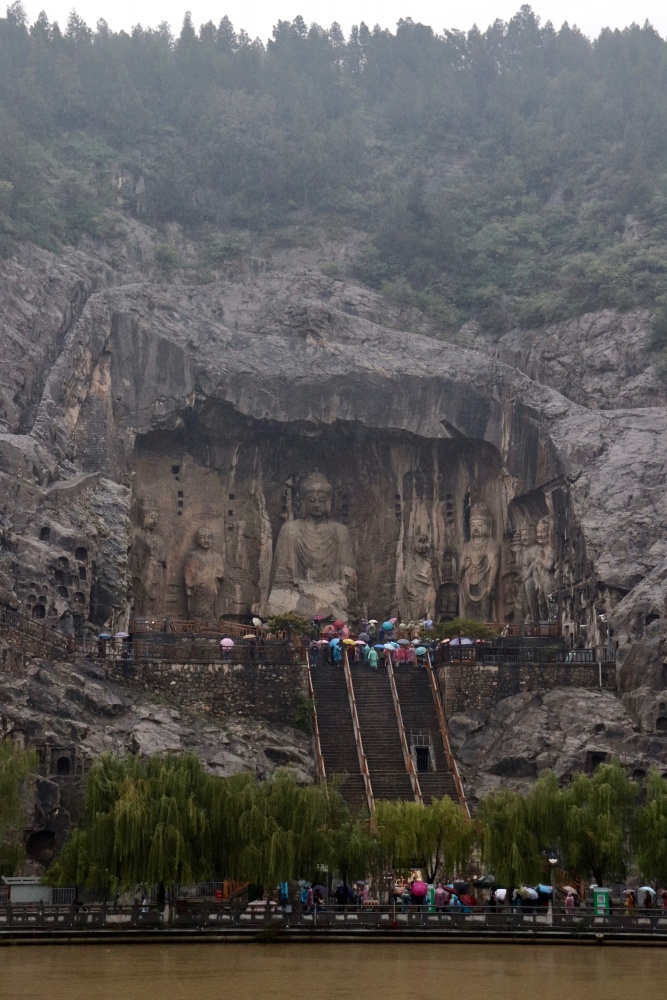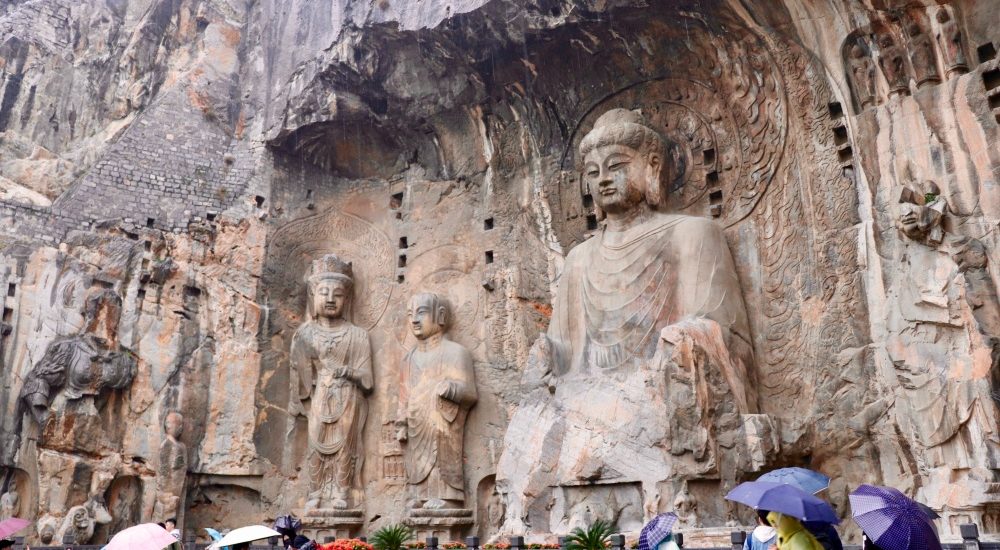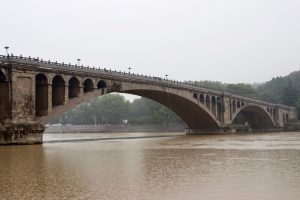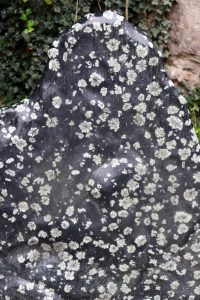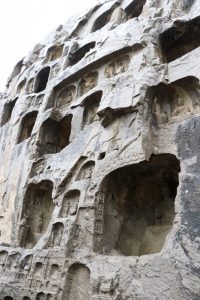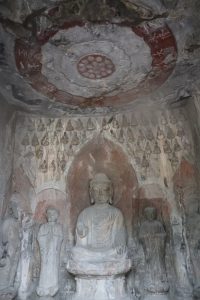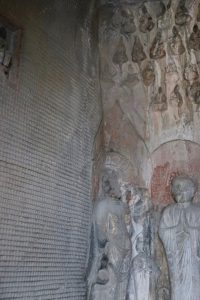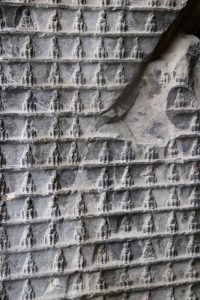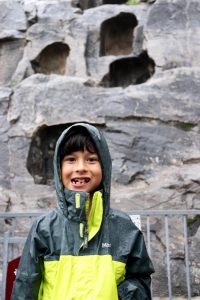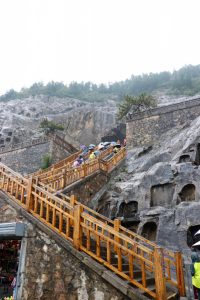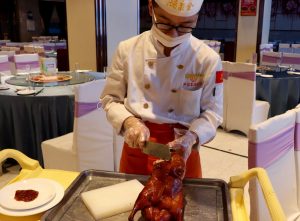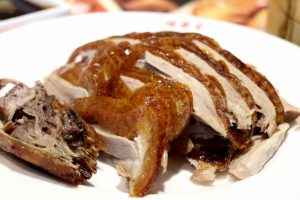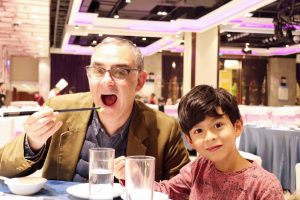This morning we set out southwest for the city of Luoyang, known as one of the cradles of Chinese civilization due to its historical significance, having been the capital of China back in the day. Despite an early train departure, it wasn’t hard to wake up Jules since he was psyched for his very first bullet train ride. China recently jacked up its top train speed to 350 kph (217 mph). In other words, very fast.
4 1/2 hours later, we were greeted by our guide, Sherry, and her driver and taken to a UNESCO World Heritage Site, the Longmen Grottoes, or Dragon’s Gate Grottoes (龙门石窟). The rain helped to intensify the ochre tones in the Yi river, a tributary to the grand Yellow River, alongside the grottoes, and the lighting provided amazing contrast, highlighting details of the carvings. It’s unfortunate that so many of the sculptures’ heads were smashed, as so much artwork was destroyed during Mao’s Cultural Revolution.
Spanning six centuries, caves containing approximately 100,000 Buddhist statues were carved into the limestone cliffs, reflecting the boom of Buddhism starting at the end of the 5th century. Of course, the politicians weren’t without their own ulterior motives when pumping all this money and labor into such an endeavor. The image of a supreme Buddha presiding over other lessor deities nicely mirrored an empire dominated by an Emperor served by his subordinates. As I write this, I can’t help but wonder what kind of monolithic vulgarity the Big Orange will commission for himself. The only consolation is that he doesn’t have hundreds of thousands of slave laborers at his disposal, as the Chinese emperors did.
All very exciting for you and me, but not so much for a little kid. Luckily, we were able to keep Jules entertained with all of the steep stairs, and I used him as a human crutch after our previous day’s knee-decimating jaunt on the Great Wall.
Speaking of the supreme Buddha, guess who lost a tooth on his way to see the big daddy of Buddhas, the Vairocana? We’re not a religious or superstitious family, but this felt like a good omen. It certainly was for Jules, since the tooth fairy apparently carries around RMB (Chinese currency). Once we reached the top of the steps, Jules was less impressed with the 55 foot tall Vairocana Buddha than with his thunderbolt holder, Vajrapani, with his abs of steel.
If any of this piques your interest in the Longmen Grottoes, then you can head over to the Metropolitan Museum of Art in NYC, which houses some artwork from inside the caves.
Wait, but what about the food?? Have no fear, foodie friends, leaving China without having eaten Peking duck would have been unconscionable. Not only did I find the sister restaurant of a famous Peking duck joint from Beijing in Luoyang, but we also paid about half the Beijing price and the vibe was legit, fully equipped with warm Chinese beer, a haze of cigarette smoke containing six Chinese men and 80’s wedding banquet décor. For my peeps who’ve been to a Peking duck restaurant before, you know that tastes-like-dishwater-after-cleaning-out-a-pot-of-duck-soup “duck soup” they give you at the end of the meal? Well, this duck soup tasted like they had been boiling duck bones for the past few days; it was fatty, flavorful and downright ducky…what a revelation!
